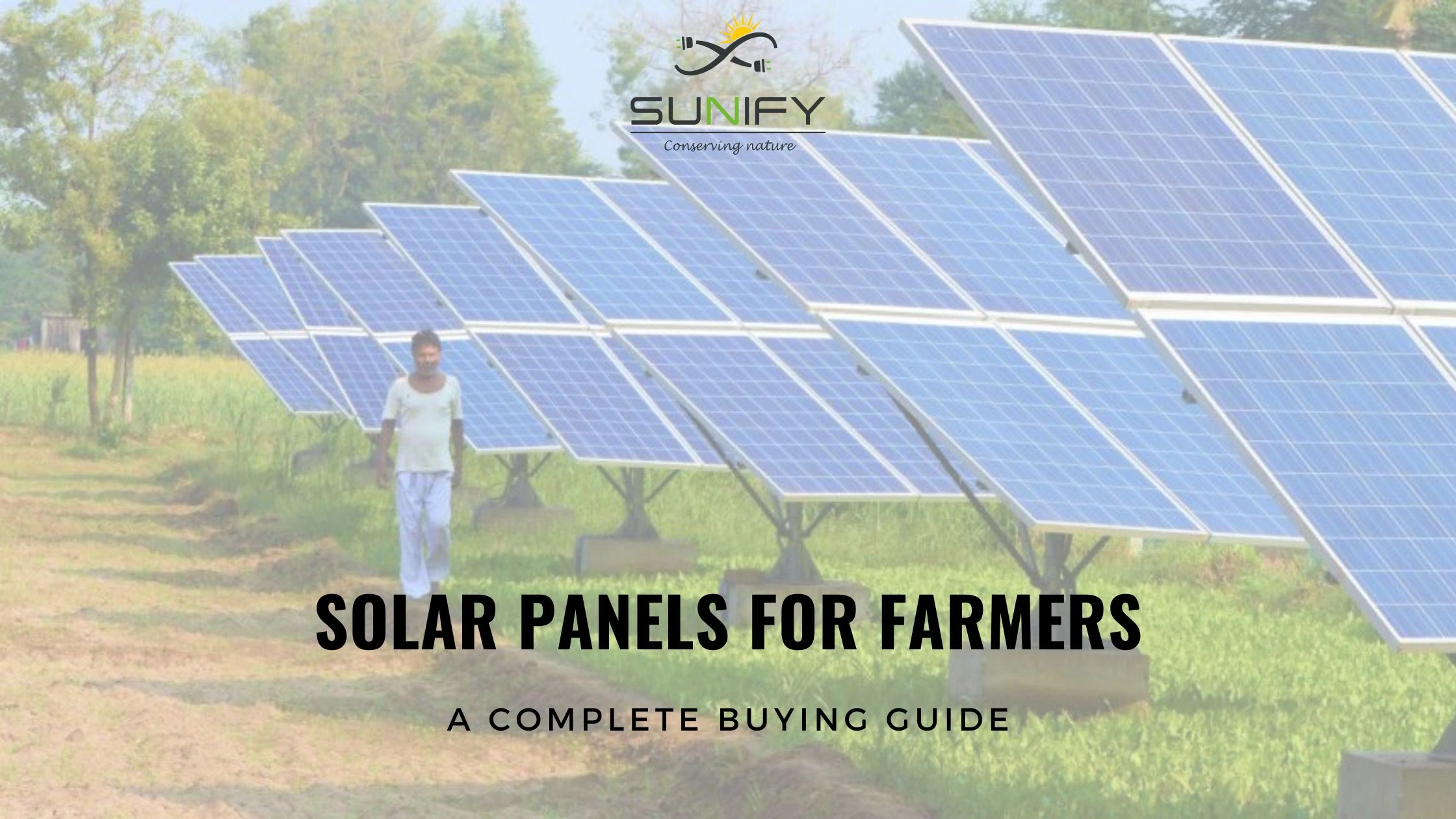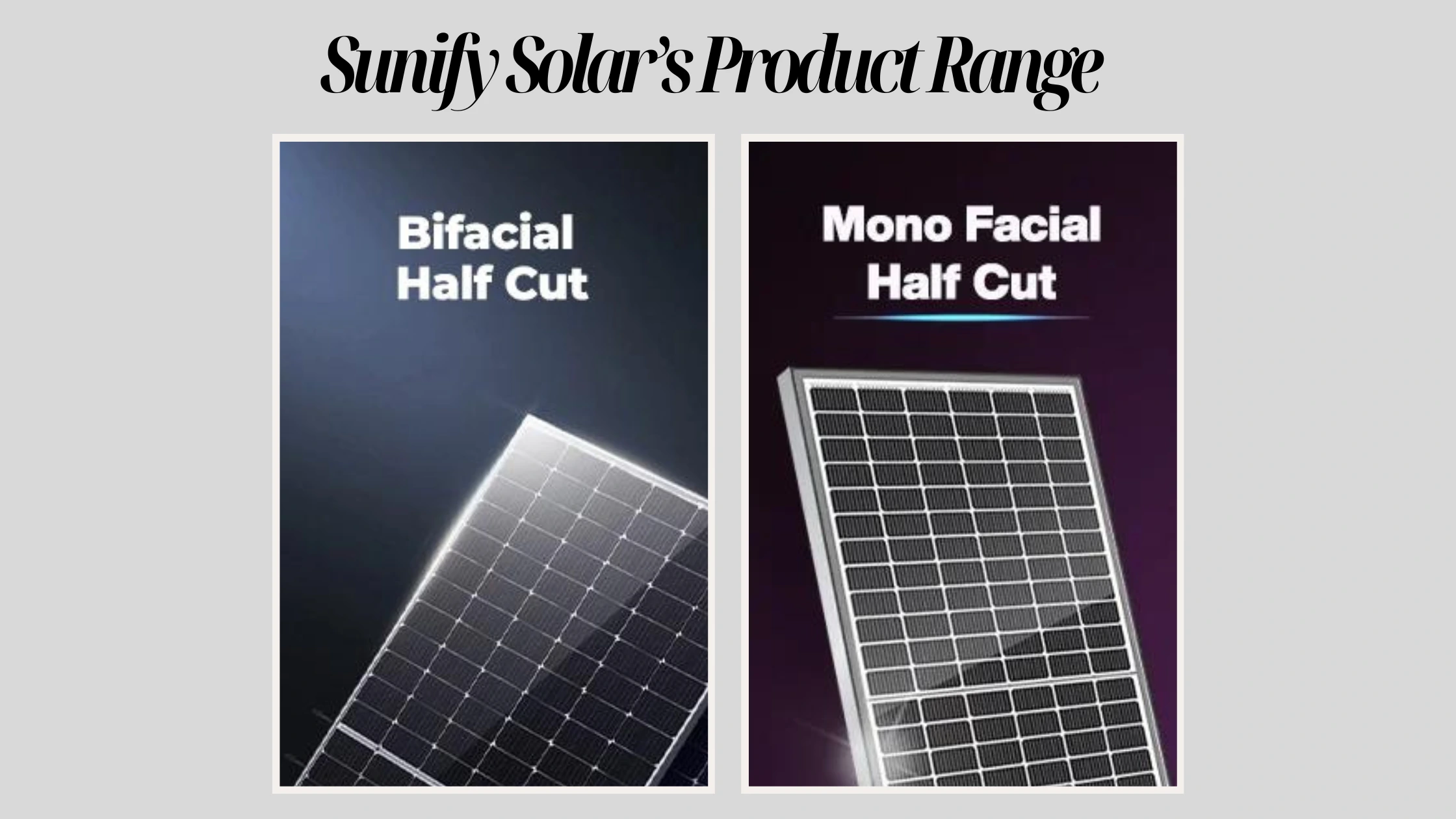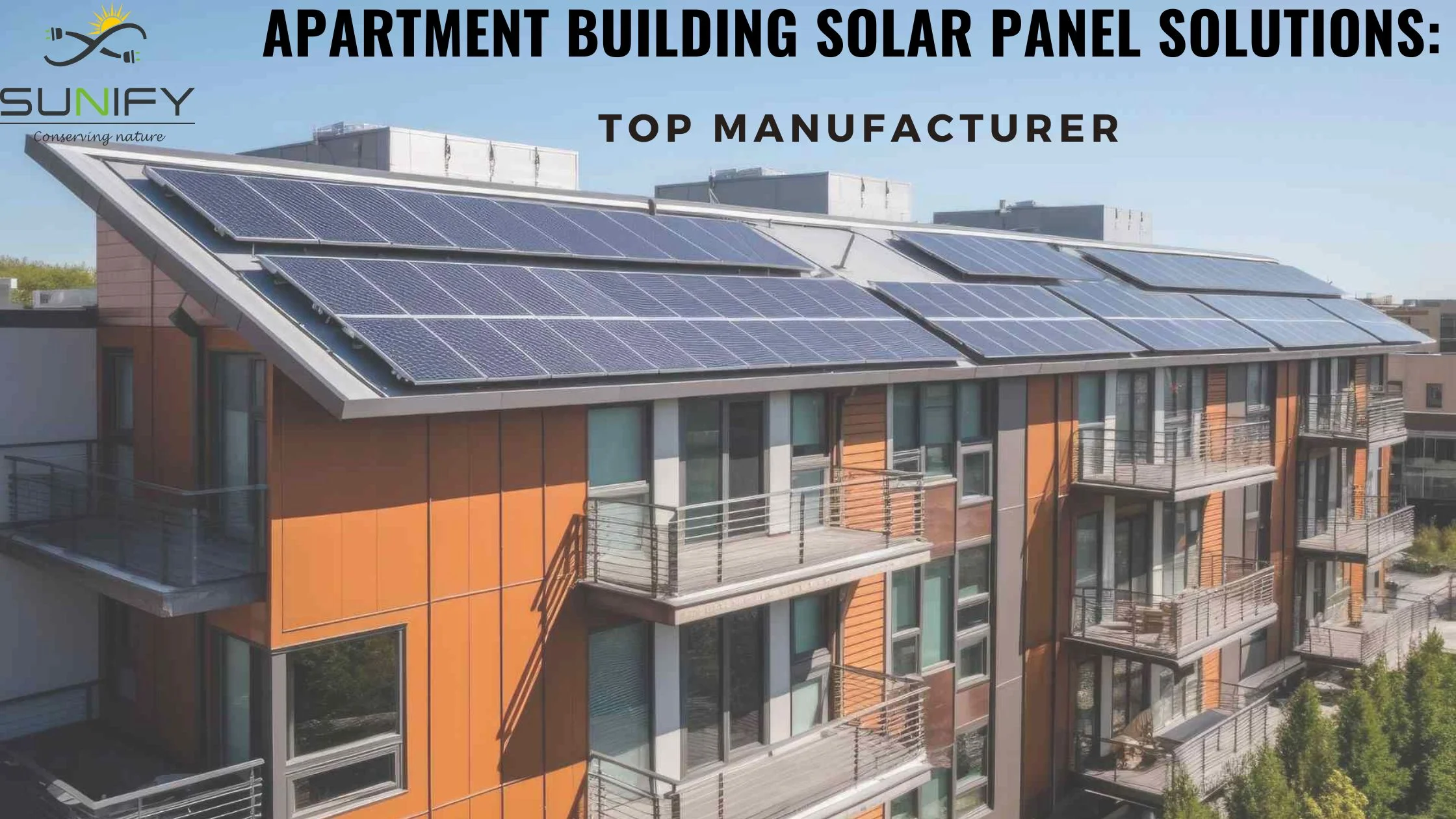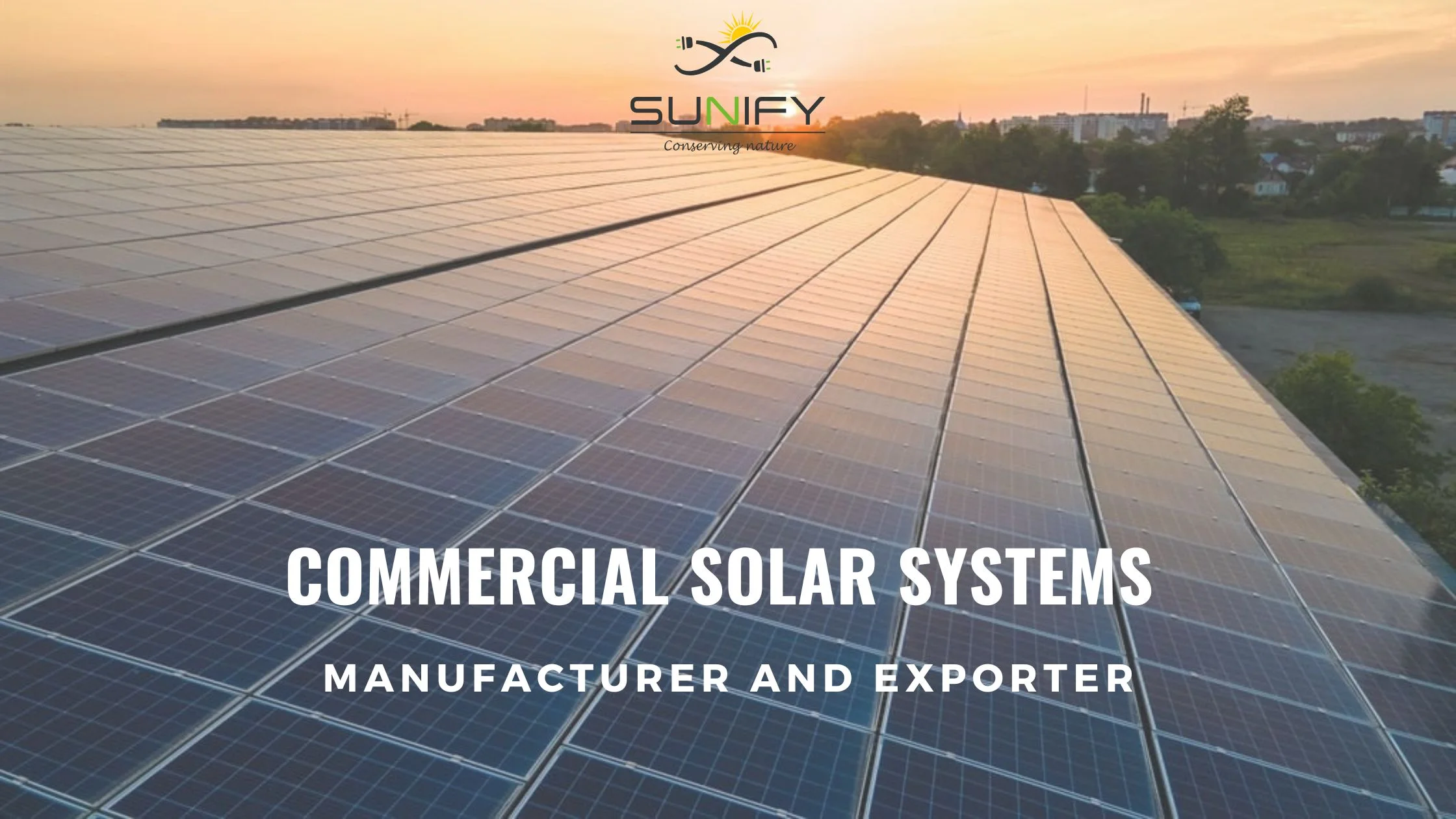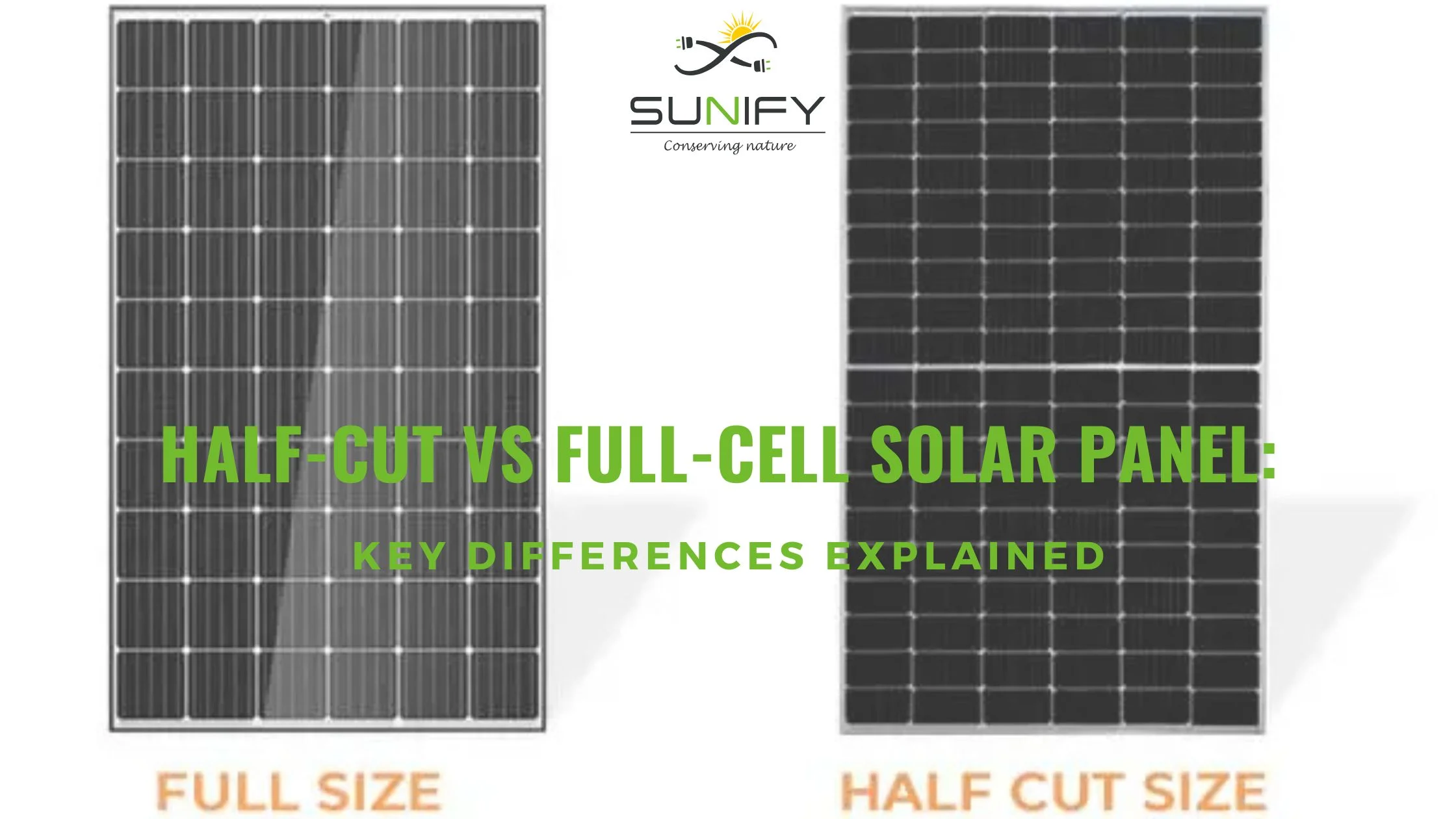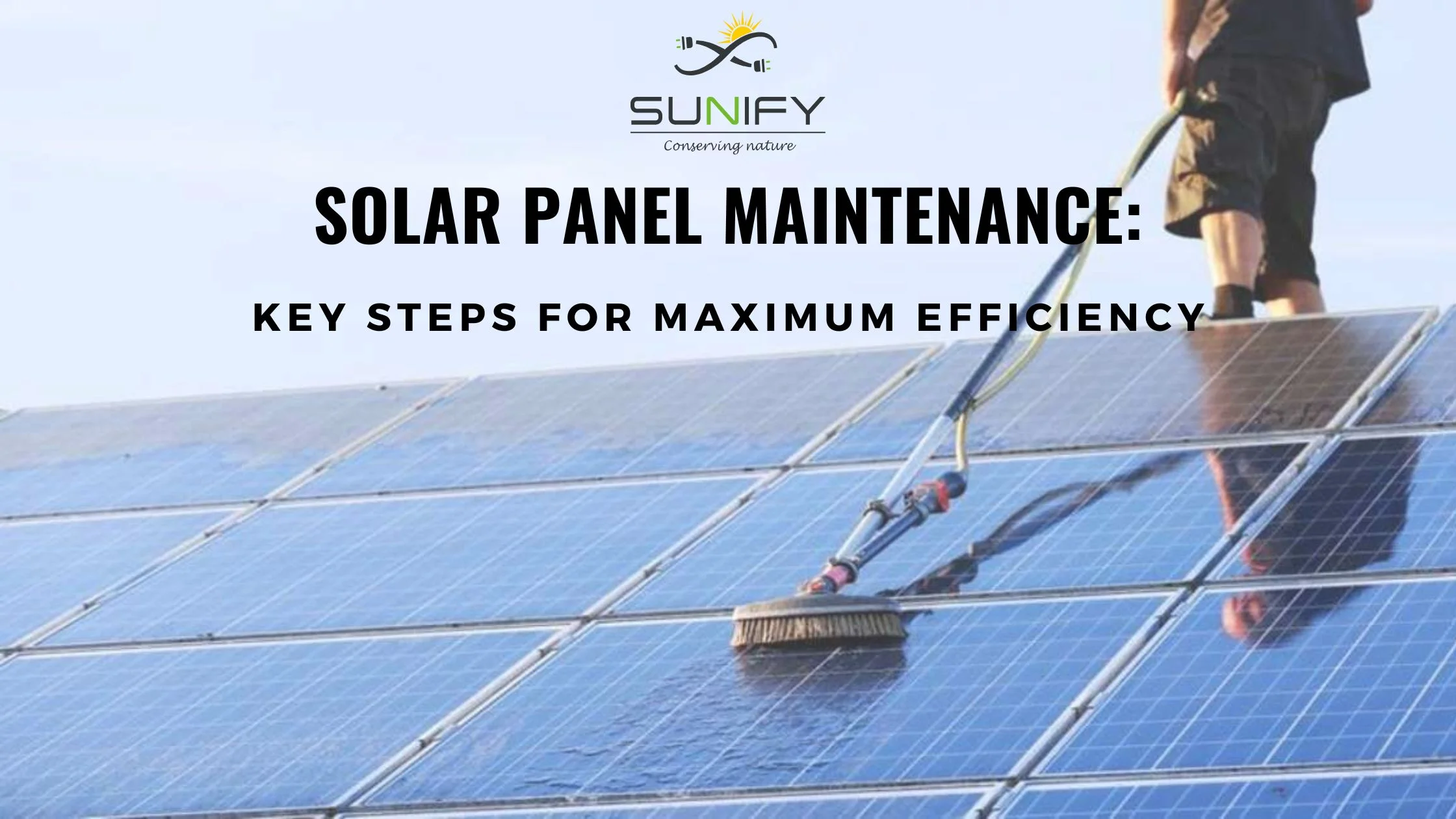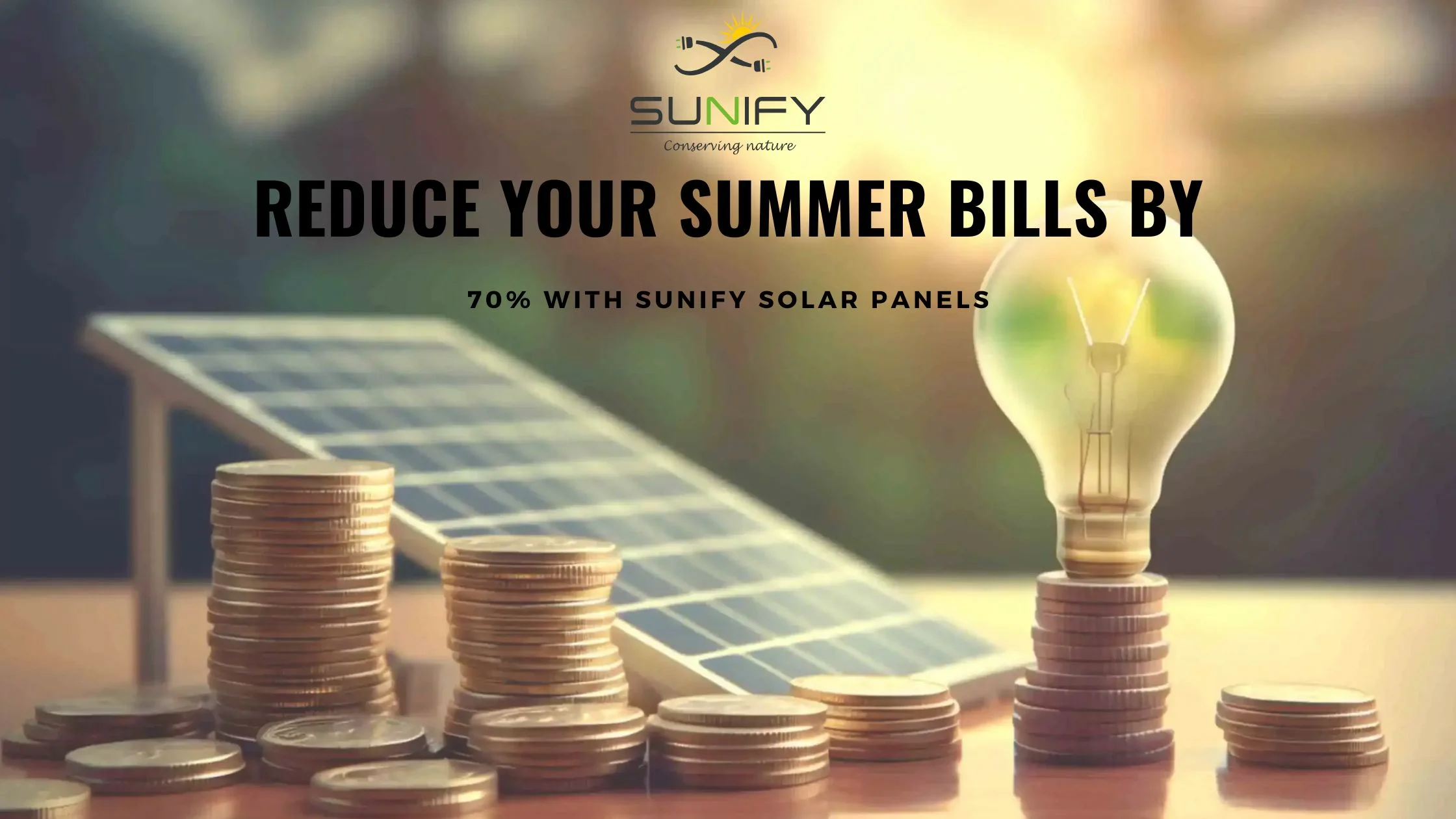
Connect With Our Team
Introduction
The application of solar panels in farming is gaining more popularity due to its very efficient, environmentally friendly means of powering farm operations. Installing solar power systems in farms is not a fad. Instead, it is part of the significant step towards energy thriftiness. Because of reduced operation cost, farmers can earn significantly higher profits.
By embracing solar energy, farmers can future-proof their working system and continue positively impacting the environment. By going through this guide, you will get all the information you need on how to decisively make a call on integrating solar panels into your farming practices.
Types of Solar Panels used for Agricultural Purposes
Knowledge of the various types of solar panels is very important while using the same in agriculture. Monofacial and bifacial solar panels are generally in usage in agricultural sectors.
Types of Solar Panels
1. Monofacial Solar Panels
Monofacial solar panels capture sunlight on just one side. These are the most traditional types seen in domestic as well as commercial applications, such as farms.
2. Bifacial Solar Panels
Wherein the monofacial panel captures the sun's rays on one side, the bifacial panel captures both sides of the panel. This therefore means, besides the rays of direct sunlight from the source, they can also collect indirectly reflected light from the ground or nearby surfaces, meaning they have more efficiency.
Characteristics and Advantages
Monofacial Solar Panels
-
Efficiency Percentage: Typically range between 15% to 20%.
-
Installation Requirements: A monofacial solar panel can be fixed on any rooftop, mounted structure, or on the ground mounts provided that the sun has direct views onto them.
-
Weather Performance: It performs steadily with any kind of weather but would lose some efficiency when covered by snow or debris.
Bifacial Solar Panels
-
Efficiency Levels: It can gain up to 30% in efficiency than a monofacial panel since it can harvest light that will reflect to it.
-
Installation Requirements: They need to be installed at an elevated area of the ground to collect more light coming from both directions. Ground-mounted system with a reflective surface underneath is highly recommended.
-
Weather Performance: It is best suited for places that have lots of snow or sand as the ground because light will be reflected many times.
Choosing the Right Type
The choice between a monofacial and a bifacial solar panel is upon the following factors:
-
Available Space: Only wide open spaces benefit from bifacial. In that case, monofacial might be preferred when given the small space, for example, rooftops.Only wide open spaces benefit from bifacial. In that case, monofacial might be preferred when given a small space, for example, rooftops.
-
Budget Constraints: Bifacial panels are costly at the beginning but give better returns in the form of energy production. Monofacial panels, being a less costly option, will be selected by farms in case of lower budget projects.
-
Energy Generation Goals: Maximizing Energy Generation Farms looking to achieve maximum energy generation will prefer bifacial panels, though monofacial panels can satisfy the standard needs pretty effectively.
Through which these factors will be studied and taken into consideration on your unique farming operation to arrive at a rational decision that fits within your operation and financial considerations.
Besides, the insights made from the knowledge regarding the albedo effect on solar power plants can further be useful in choosing the type of solar panel you should use on your farm. The term albedo is used to describe the reflectivity of a surface; the higher the albedo of a given surface, the more it contributes to the efficiency of bifacial solar panels because of the increased light reflected that would likely be utilized for energy production.
Therefore, taking the albedo effect of the surrounding environment into consideration may further improve your strategy for the production of solar energy a notch up.
Exploring Solar Systems for Farmers
1. On-Grid Systems
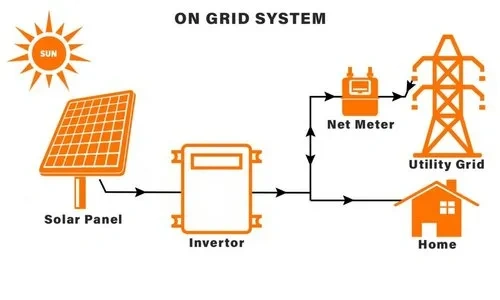
The on-grid solar systems are connected to the utility grid, and you can avail the benefits of net metering. This feature enables farmers to feed any excess power generated by their solar panels back to the grid and thereby bring down the electricity bills. It comes in handy where the farm constantly demands a supply and has a connection to the utility grid.
Advantages of On-Grid Systems:
-
Net Metering: Selling the excess energy back to the grid diminishes the operational costs.
-
Reduced Electricity Bills: Sell the electricity produced back to the grid and thus bring down the electricity bills of your farm.
-
Scalability: This system is expandable with the increases in your usage of energy.
2. Off-Grid Systems
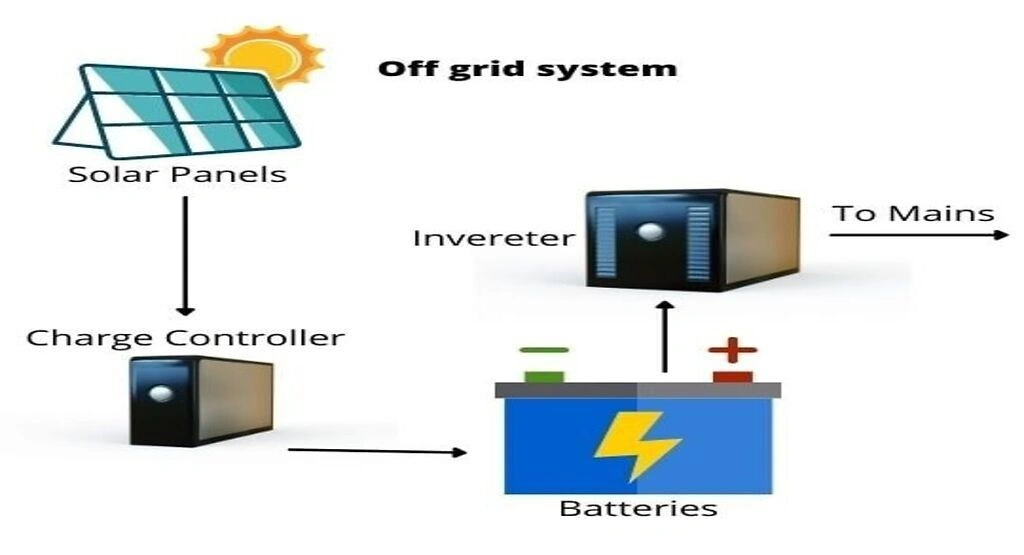
Off-grid solar systems work independent of the utility grid. These systems store generated energy in batteries that provide energy autonomy, especially to isolated farms seeking self-sufficiency. If your farm is located in an area with no reliable access to the utility grid, then off-grid systems will come in very handy.
Advantages of Off-Grid Systems:
-
Energy Independence: Are guaranteed to have a constant supply of power regardless of whether the grid is available or not.
-
Resilience Against Power Outages: Will continue working even during grid failures.
-
Remote Application: Suitable to be operated in farms whose location is far from the mains supply grid while connecting to it is not practically possible.
3. Hybrid Systems
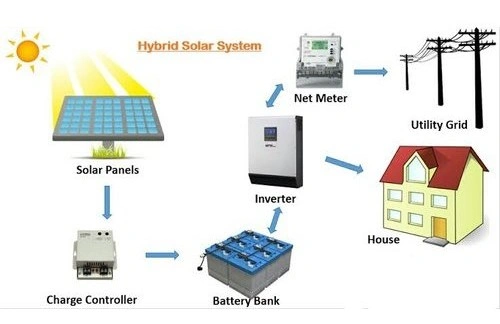
Hybrid solar systems also represent the alternative choices where both the on-grid and off-grid systems are integrated. In this solar system, the farmer is likely to enjoy net metering while enjoying possibly having options of battery storage. This provides energy independence, especially at nights or when outages are experienced.
Knowing the difference between these systems puts a person in an excellent position to make an informed decision as to what best suits.
Your decision to install on-grid, off-grid, or hybrid systems is often determined by several factors including the farm location, the energy needs of your farm, and the reliability of local utility services. The two options have several characteristics that can very much enhance the sustainability and operational efficiency of your farm.
Agrivoltaics: Harnessing Solar Energy While Cultivating Crops
Agrivoltaics is a revolutionary approach that integrates agriculture with the generation of solar energy. It allows for a simultaneous use of land. Through the integration of the use of solar panels for farmers and conventional farming, agrivoltaics maximizes the utilization of agricultural land.
Advantages of Agrivoltaics:
Increased Land Efficiency: The utilization of solar panels and crops on the same piece of land can lead to increased efficiency. Farmers can then generate electricity as they still go about tending to their crops or raising livestock in the piece of land.
Reduced Water Evaporation: The installation of the solar panel creates a shading effect that will minimize the soil temperature and subsequently reduce water evaporation. This in turn will help to reduce irrigation, thereby conserving water supplies.
Improved Microclimate Conditions: Cooler temperature at daytime and warmer conditions during night prevail because of shading created by the solar panels, hence positively influences microclimate conditions for crops and increases their growth and resistance.
Enhanced Crop Yield: According to several studies, agrivoltaic systems enhance crop yield. This not only helps produce more food but also solves the farming issue concerning the sustenance of food production.
Agrivoltaics is not just about the generation of clean energy; it is much more than that-a safe agriculture system ensuring sustainable agriculture exists. It is a new innovative practice-the future developmental thinking related to agriculture and renewable energy.
Practical Considerations for Installing Solar Panels on Farms
Factors That Will Influence Site Selection for Solar Installations
The location will improve the efficiency of your solar panels. Some factors include:
-
Sunlight Exposure: Ensure that your panels receive at least five hours of direct sun exposure in every day. Shaded areas include grounds that have trees, buildings, and other construction structures.
-
Land Use: Ground-mounted systems might occupy much land but offer much flexibility to layout them to ensure proper sunlight exposure with minimal shading.
Zoning Regulations
These local zoning regulations must be met to avoid any legal troubles.
-
Permits and Approvals: Always ensure to obtain all the permits before the installation process.
-
Land Use Restrictions: There may exist a possibility of a restriction that could impact where and how you are allowed to site your solar panels.
Conclusion
What is most fascinating about solar panels is that investing in them can help farmers save energy costs, make the system more efficient, and actually embrace eco-friendly farming techniques. There are many ways you can begin to tap into renewable energy to run irrigation systems, to storage facilities, if you choose the right solar system suitable for your farm. Sunify Solar has dedicated itself fully to make it easy and affordable for farmers to make a clean energy transition. With expert guidance, reliable products, and broad support, we help you take control of your energy future and contribute to a greener planet.
FAQs (Frequently Asked Questions)
1. What are the benefits of solar energy for farmers?
Solar energy provides numerous benefits for farmers, including significant cost savings on energy bills, reduced environmental impact through cleaner energy sources, and long-term sustainability that can enhance profitability and operational efficiency.
2. What types of solar panels are best suited for agricultural needs?
The two main types of solar panels commonly used in agriculture are monofacial and bifacial solar panels. Monofacial panels capture sunlight from one side, while bifacial panels can capture sunlight from both sides, often resulting in higher efficiency levels. The choice depends on factors such as available space, budget constraints, and specific energy generation goals.
3. What is the difference between on-grid and off-grid solar systems?
On-grid systems are connected to the utility grid, allowing farmers to benefit from net metering and sell excess power back to the grid. Off-grid systems operate independently from the grid, providing energy autonomy and resilience against power outages, making them ideal for remote farms seeking self-sufficiency.
4. How does agrivoltaics benefit farming?
Agrivoltaics is a sustainable approach that combines agriculture with solar energy generation. It allows crops to be grown under solar installations, leading to increased land productivity, reduced water evaporation, and improved microclimate conditions that can enhance crop yields.
5. What practical considerations should be taken into account when installing solar panels on farms?
Key considerations include assessing sunlight exposure requirements for optimal performance and ensuring compliance with zoning regulations to avoid legal issues during installation. Proper site selection is crucial for maximizing the benefits of solar energy.
Recently Posted
Whatsapp Chatx
Hi! Click one of our representatives below to chat on WhatsApp or send us email to solar@sunifysolar.in

|
************** +91 81414 55503 |

We will love to hear from you!


